Mini Motorways has been several years in the making. It’s the sequel to the lauded puzzle game Mini Metro, which according to Steam, is my 14th most played PC game of all time. I’ve sunk days into building up an efficient train network whilst knowing that inevitably it will become choked and overwhelmed with its own success.
This new game takes the blueprint of Mini Metro and adds some new layers of complexity to keep it fresh and interesting and focuses on road networks. Be prepared to lose hours of your life…
So what is Mini Motorways anyway?
Unlike most games featured here at Traxion, you won’t be driving. Instead, you’ll be building the most efficient road system for cars to move from A to B and then back again (no Hobbits required).
You are given limited road tiles to place down and you can choose the path that you see fit. Houses and warehouses are the two building types and they’ll be randomly placed on the map in all kinds of awkward and challenging positions.
It starts out purposely slow as you have a couple of houses and one warehouse to route them to but the pace escalates quickly from there.
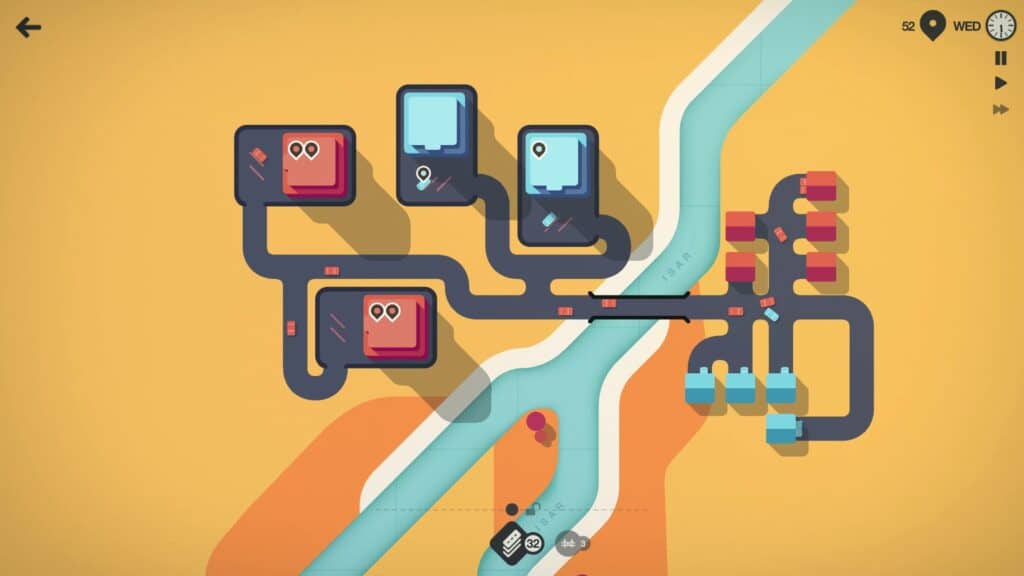
Every building is colour matched and soon you’ll need to route the cars with red destinations across the blue ones, while green and purple routes spaghetti their way around. You can destroy and remap your system on the fly and the traffic intuitively learns the quickest route. This keeps you on your toes as what works for you in the early game can quickly become a bottleneck later on.
This is where Mini Motorways ingenious upgrade system comes in – carried over from Mini Metro.
Time passes quickly and at the end of every in-game week, you are offered a choice of two random deliveries of tools. This can be from 30 road pieces, 20 road pieces (plus a roundabout, tunnel, traffic light or bridge) or 10 road pieces and a motorway.
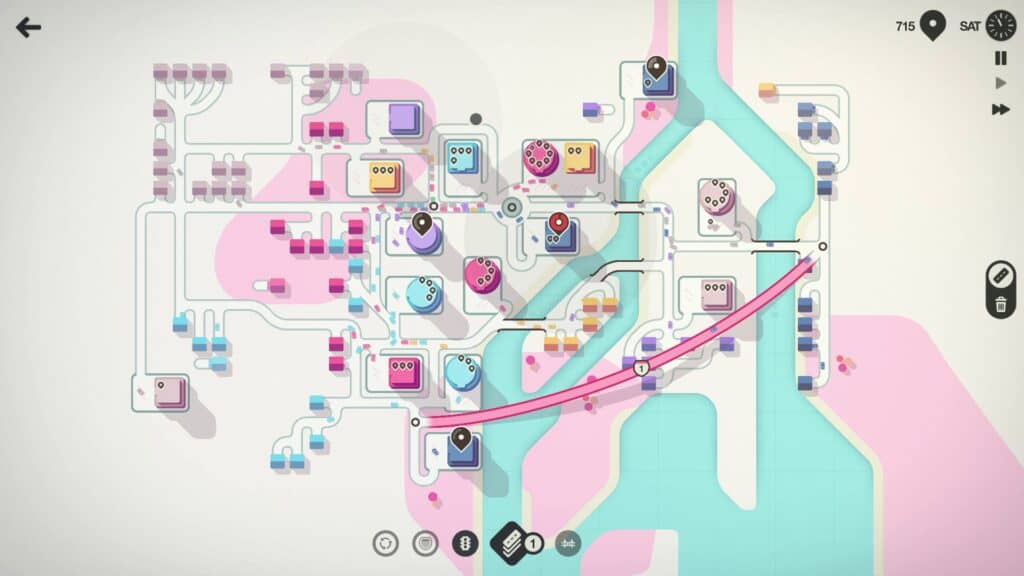
Each special tile brings its own bonuses but then you have less road to play with. Roundabouts are great for keeping traffic flowing at intersections. Traffic lights are handy if you have lots of traffic joining onto an arterial road and that keeps from slowing down regular traffic. These stop the tiny deceleration that traffic takes at every junction. You don’t notice it immediately but they are very useful.
As time passes, the map slowly zooms out. This opens up more of the map for these random warehouses to drop. As the maps are based on real cities, these are where bridges and tunnels come in.
Often something will drop on the other side of a river or mountain range and if you don’t have enough bridges or tunnels in stock to get across, you’ll be in trouble very quickly. The trusty motorway can help save the day though.
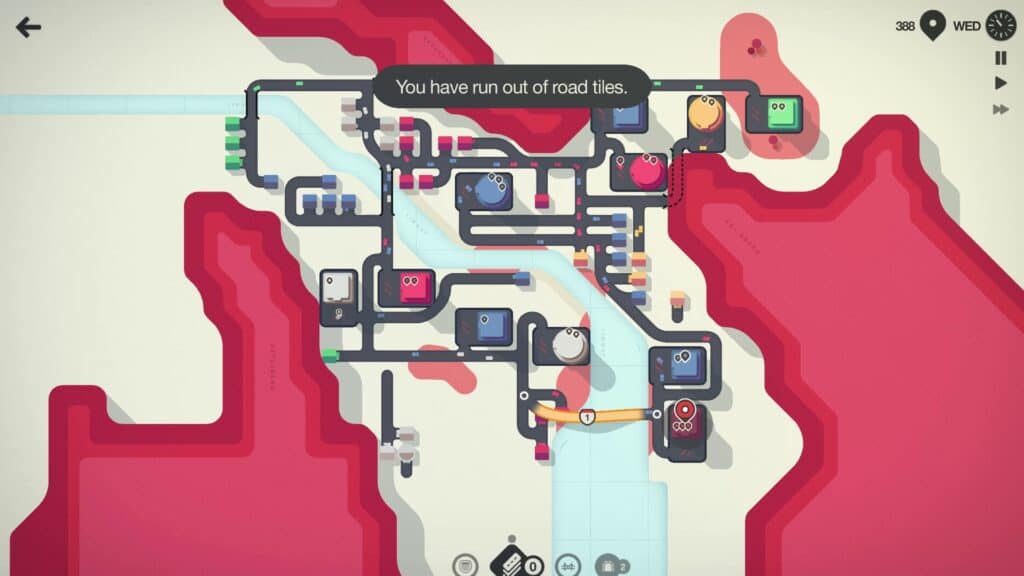
These beasts can connect two points on the map at any distance and are vital for declogging your roads. The strategy is to use them to clear out large swathes of traffic in busy areas where clusters of homes are causing bottlenecks. The traffic can then zoom by over other buildings at a faster speed.
The downside is that the traffic is going to land somewhere and so you need to plan for where the on and off-boarding of all this traffic will end up.
All too often I ended up causing just as many issues by not thinking the traffic flow of my motorways through properly.
Striving for pure efficiency
Each warehouse building can only wait for a few cars at a time and the distribution of where cars should go to next is partly random and partly based upon how many houses are on the map.
When there are too many cars that haven’t arrived at a building, a timer countdown begins and if that ends before you’ve cleared the backlog, it’s game over. What keeps the game a constant tug of war is that the warehouse buildings upgrade their capacity, but as a result seem to double the number of coloured houses linked to it. At some point, your weakest link, longest journey or least efficient route will fall over and that will be your downfall.
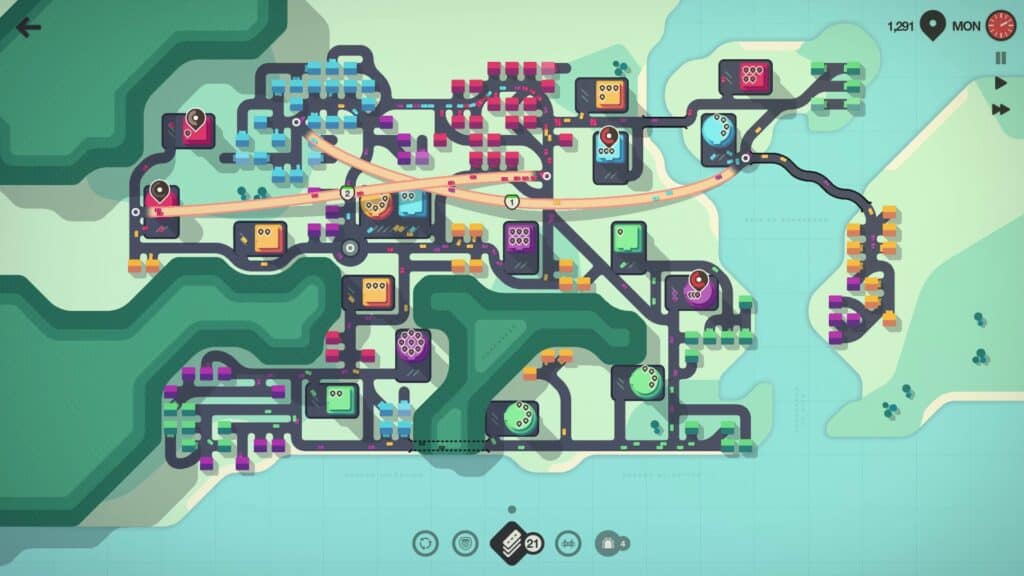
Mini Motorways is so very addictive. The random nature of it means sometimes you’ll get luckier runs than others, but it’s always within your skill and grasp to fight back.
There are 11 maps of cities at launch, each with its own beautiful colour palette. Additionally, there are daily and weekly challenges where everyone plays the same map seed for leaderboard glory. Here you’ll also see game modifiers in play such as having only half of your road pieces available or you’ll have special tiles available from the start.
Two particular modifiers stood out as extra challenging for me. The first was low-density mode, where everything is tightly compacted together. It keeps you on your toes but also feels and looks immensely satisfying. The second was a mode where you couldn’t demolish trees. I’d barely noticed their existence in the normal game mode and just thought they were pretty graphics. I was very wrong. Trees mean even more planning and you can wave goodbye to any semblance of block building.
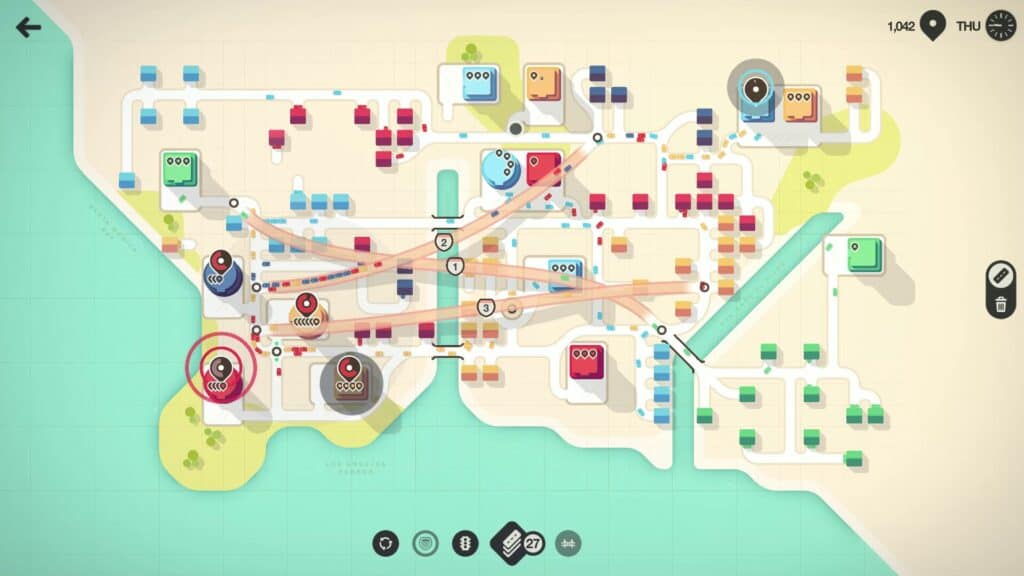
The last thing I wanted to bring up is the soundtrack. Disasterpeace – known for the soundtrack in indie-hit FEZ and moody movie ‘It Follows’ – is the sound engineer for the series and the music has an ethereal airy quality to it. It isn’t really melodic music, but an early morning hum mixed with ticking clocks and soft, curious, pangs of surprise when a new building is placed. It feels just as alive as your city does.
Return journey
Mini Motorways is a fantastic experience. Different enough to Mini Metro to stand out from its shadow but with enough familiarity to please old fans, this is a quiet panic puzzle game for the thinkers.
The challenge creeps up on you like an undercut you should have planned for and then suddenly you are left thinking ‘how did that go so wrong so quickly?’. Endlessly replayable, beautiful to look at and featuring engrossing gameplay, this is another roaring success.

| Developer | Dinosaur Polo Club |
| Release date | 20th July 2021 |
| Available platforms | Apple Arcade and PC (Steam) |
| Version/s tested | PC (Steam) |
| Best played with | Keyboard and mouse combination |
Full disclosure: A code for the game was provided by the publisher for review purposes. Here is our review policy.
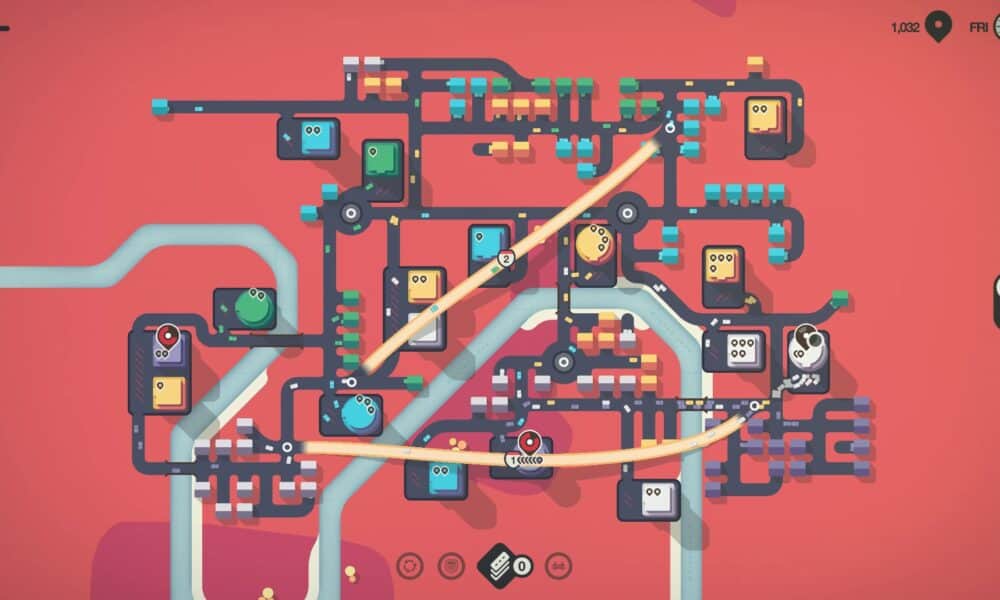



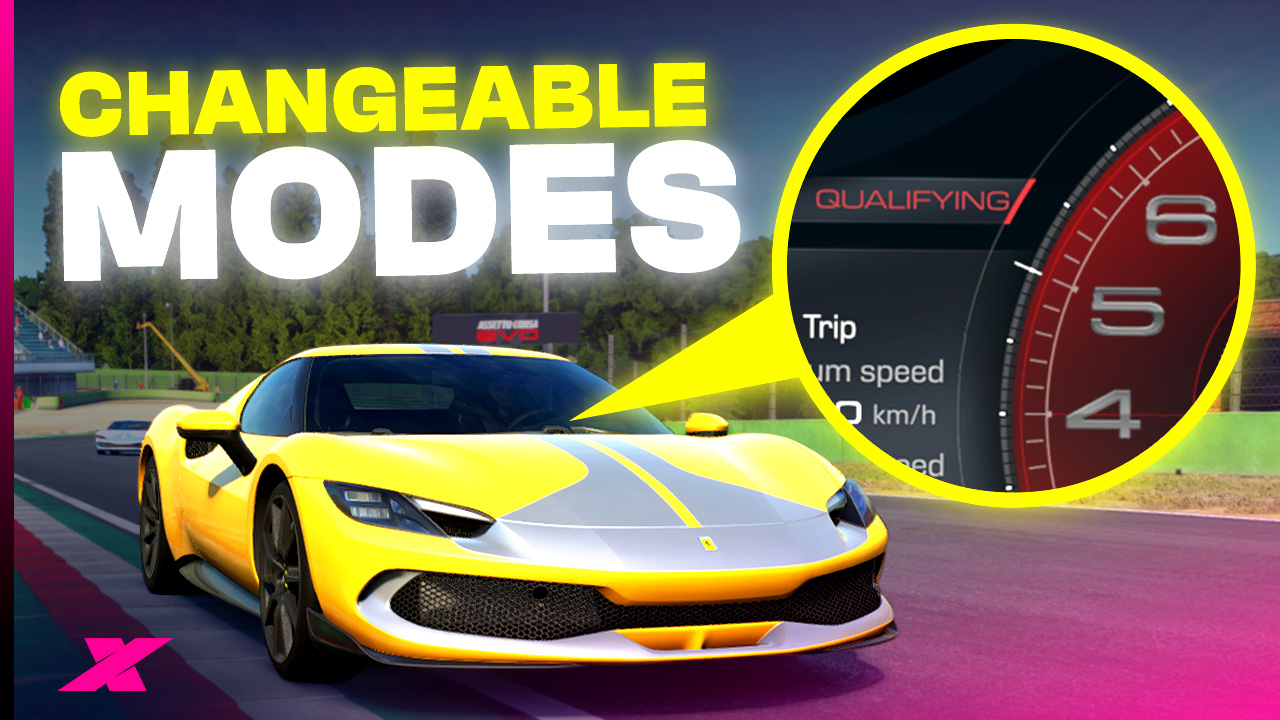
Chat with the Community
Sign Up To CommentIt's completely Free